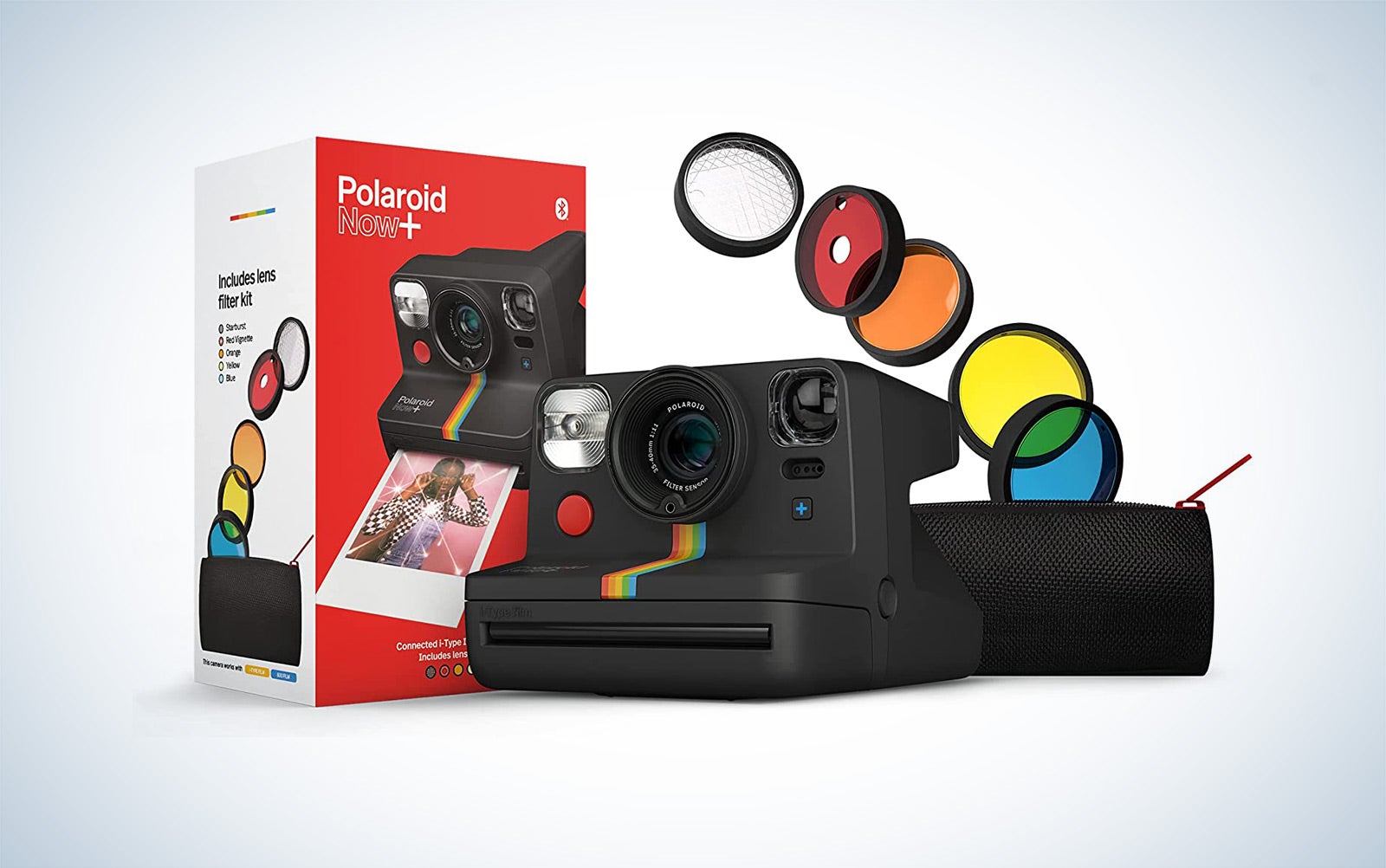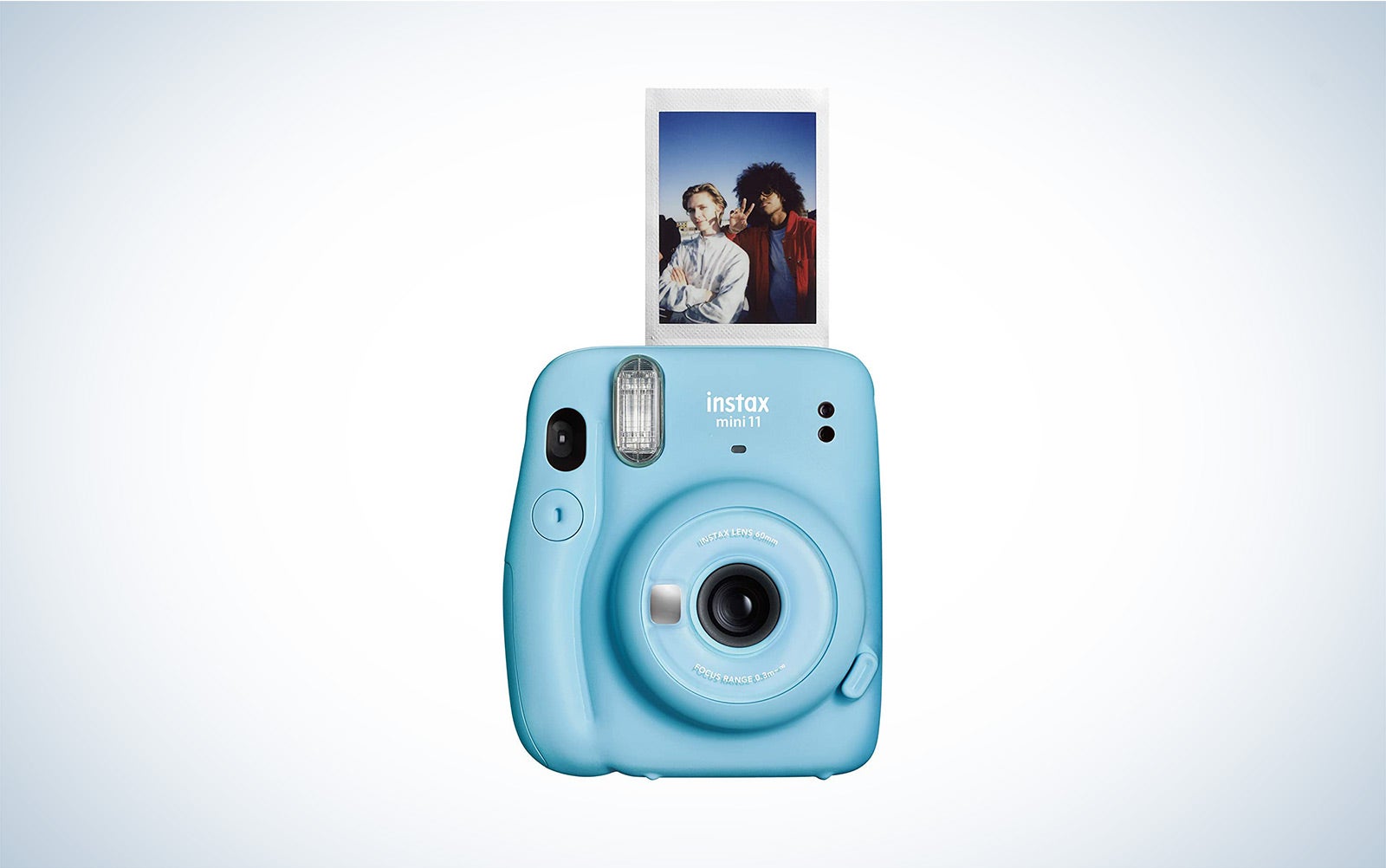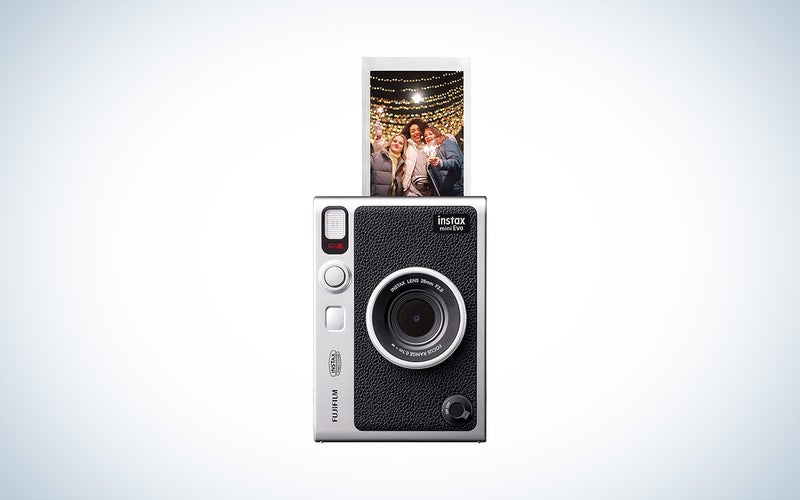We may earn revenue from the products available on this page and participate in affiliate programs. Learn more ›
Instant cameras are a fun and extremely easy way to dive into photography. They are typically fully automatic, making them a great option for kids, enthusiastic amateurs, or seasoned pros. Prints are produced in just a few seconds and come in a variety of sizes. Lots of the cameras come in fun colors, and you can find film borders in all sorts of colors and designs. If you have never tried instant photography, the best instant cameras are sure to make you fall in love.
- Best Polaroid: Polaroid Originals Now+
- Best hybrid Polaroid: Polaroid Lab
- Best square Instax: Fujifilm Instax Square SQ1
- Best Instax Mini: Fujifilm Instax Mini 11
- Best hybrid Instax: Instax Mini Evo
- Best budget: KODAK Printomatic Digital Instant Print Camera
Best instant cameras: Reviews & recommendations
The instant camera was invented by Edwin H Land of Polaroid in the late 1930s. The medium then became an incredibly popular–and approachable–way of shooting photographs in the 60s and 70s. It appealed to growing families in the suburbs, as well as professional artists like Andy Warhol, who used the cameras to produce some of his most famous works of art. Although there are still plenty of vintage working instant cameras on the market, it can be difficult to find the correct formats of film for them or the batteries that make them run.
Luckily there are plenty of modern instant cameras being made that provide the joy of instant photography in smaller packages that use easy-to-find (and more affordable) film. These include the likes of Polaroid, Kodak, and Fujifilm. Below are some of our favorite instant cameras that are widely available today.
Best Polaroid: Polaroid Originals Now+
Polaroid Originals
Why it made the cut: It’s easy to use, but thanks to app connectivity, it also provides full manual control, should you want it. Plus, it’s compatible with two types of film for more versatility.
Specs
- Weight: 1.05 pounds
- Dimensions: 5.91 x 4.4 x 3.76 inches
- Minimum focusing distance: Not provided
- Focal length: Standard lens: 102.35 mm (40mm/35mm equivalent) Closeup lens: 94.96 mm (35mm/35mm equivalent)
Pros
- Accepts both i-Type and 600 instant films
- App connectivity for more control
- Large print size
- Fun, retro design that comes in many colors
Cons
- Film is a bit finicky and expensive
The Polaroid Originals Now+ is an analog instant camera for the modern age. Its built-in Bluetooth allows you to connect to the powerful Polaroid app. With the app, you can easily create double exposures or even light-painting images on instant film. It also has a portrait assist mode, which tells you where to put your subject to get some background blur. And you can even shoot with full manual control with the app. The camera works without it, but the app opens up a lot of possibilities.
The Now+ provides a powerful flash for shooting indoors. It also features a self-timer for capturing selfies and group photos and features a tripod thread to make those types of shots easier. It, conveniently, is rechargeable via micro USB. And the camera is compatible with both I-type and 600 films, which each come with eight frames per pack. This particular bundle also comes with five filters for even more creative and fun images.
Best hybrid Polaroid: Polaroid Lab
Polaroid Originals
Why it made the cut: The Polaroid Lab is like a mini darkroom. It turns digital photos from your phone into analog instant photos using a lens and authentic Polaroid photochemistry.
Specs
- Weight: 1.4 pounds
- Dimensions: Closed: 5.9 x 4.6 x 5.9 inches Open: 5.9 x 4.6 x 7.0 inches
- Minimum focusing distance: Not applicable
- Focal length: Not applicable
Pros
- Uses real Polaroid photochemistry to create an analog print
- Very simple to use
- App provides editing tools
Cons
- Not as spontaneous as an instant camera
- Film is pricey
If you want the look of classic Polaroids but don’t want the risk of taking a shot on expensive film and it not turning out, the Polaroid Lab is the answer. This device is unique in that it doesn’t just create prints of digital files. Instead, it uses a three-element lens and auto-adjusting shutter system to actually take a photo of the photo on your phone. It then uses traditional Polaroid photochemistry to create a true analog print.
The Polaroid Lab accepts both Polaroid 600 and Polaroid Originals i-Type films. It charges via USB and provides Bluetooth connectivity to pair with your phone. Within the Polaroid app, you can edit your photos before printing. It even offers Collage mode, which splits up your photo into up to nine frames and then prints on separate pieces of film. And for something really different, you can use Augmented Reality to assign video playback to still images, layering motion onto your photos.
Best square Instax: Fujifilm Instax Square SQ1
Amazon
Why it made the cut: The Instax Square SQ1 produces classic square instant photos, is extremely easy to use, comes in three colors, and produces quality prints.
Specs
- Weight: 13.8 ounces
- Dimensions: 5.1 x 4.7 x 2.3 inches
- Minimum focusing distance: 11.81 inches
- Focal length: 65.75mm
Pros
- Easy and comfortable to hold
- Includes a mirror for selfies
- Focuses as close as 11.81 inches
- Easy to use
Cons
- Prints are smaller than Polaroids
- No self-timer or tripod socket
The SQ1 is an easy-to-use instant camera that is a great option for beginners. It has a retractable 65.75mm f/12.6 lens, fully automatic exposure control, and a flash that always fires. You pull on the lens to activate the camera’s selfie mode and can use the little mirror on the front of the lens to check your frame before you fire.
Two CR2 batteries power the camera, and it comes in orange, blue, or white. It also features a nice grip on the right side which makes it comfortable to hold. Although it lacks some of the creative features of other Instax or Polaroid cameras, it consistently prints beautiful, nicely exposed square frames.
Best Instax Mini: Fujifilm Instax Mini 11
Amazon
Why it made the cut: The Instax Mini 11 produces tiny little prints and is fun and inexpensive to use.
Specs
- Weight: 10.34 ounces
- Dimensions: 4.24 x 4.77 x 2.65
- Minimum focusing distance: 11.81 inches
- Focal length: 60mm
Pros
- Affordable
- Includes a mirror for selfies
- Powered by AA batteries
Cons
- No tripod socket
Similar to the SQ1, the Instax Mini 11 is an easy-to-use camera, but the Mini shoots the smaller Mini film. Mini film has a frame size of 2.1 x 3.4 inches with an image area of 1.8 x 2.4 inches. The camera is also nice and small, which is great for bringing with you on outings. It automatically selects the shutter speed depending on the scene, so you don’t need to worry about figuring out camera settings.
The Instax Mini 11 comes with two shutter button accessories that allow you to customize the camera. In addition, it is available in five different colors: lavender, blush pink, light blue, white, or black. And it’s powered by two AA batteries, so you don’t have to keep track of cords. And it features a pull-out lens to activate selfie mode with a tiny mirror on the front that lets you check your frame before you shoot.
Related: Polaroid Fade-to Black Film Made Photos That Disappeared Way Before Snapchat
Best hybrid Instax: Instax Mini Evo
Fujifilm
Why it made the cut: Fujifilm’s take on a hybrid instant camera allows you to print photos from your phone or take and print photos with the camera and then send those files to your phone. Plus, you can’t beat the camera’s retro styling.
Specs
- Weight: 10.9 ounces
- Dimensions: 4.8 x 3.4 x 1.4 inches
- Minimum focusing distance: 3.9 inches
- Focal length: 28mm
Pros
- Unique blend of printer and digital camera
- Attractive retro design
- Lots of digital filter effects
- Bluetooth connectivity
Cons
- Digital image quality isn’t great
If you like the idea of the Polaroid Lab but still want an actual camera, the Instax Mini Evo will hit that sweet spot for you. It is a hybrid camera that allows you to take and print photos with the camera itself. You can also choose not to print a photo and just store it as a digital file on the camera. The camera can hold 45 photos with internal memory, or you can use a microSD card for additional storage.
The Instax Mini Evo provides 10 lens effect options and 10 film effect options, giving you up to 100 different image styles. It also uses Instax Mini film, which will give you a 3.4 x 2.1-inch print with a 2.4 x 1.8-inch image area. It provides Bluetooth connectivity so you can use your phone as a wireless remote control, print photos from your phone, and save photos taken and printed from the camera to your phone.
Best budget: KODAK Printomatic Digital Instant Print Camera
Amazon
Why it made the cut: The Printomatic has a very budget-friendly purchase price and uses affordable Zink paper, saving you money all around.
Specs
- Weight: 7.1 ounces
- Dimensions: 1 x 4.83 x 3.11 inches
- Minimum focusing distance: Not provided
- Focal length: 8mm
Pros
- Affordable
- Extremely easy to use
- Results in digital photos and physical prints
- Zink paper is more affordable than instant film
Cons
- Zink paper isn’t as high-quality as traditional photo paper
- Doesn’t work well in low-light conditions
For those wanting the joys of instant photography at a lower price, The Kodak Printomatic is a great choice. Not only is the initial purchase price lower than other instant cameras, but it uses Kodak Zink paper instead of more expensive film packs. It’s built around a 5MP sensor and features a wide-angle f/2 lens.
The prints that it makes are water-resistant, tear-resistant, and smudge-free. Plus, they have a sticker back, so you can display them on anything. You don’t need an ink cartridge to print, and if you are out of paper, the camera will save images to its microSD card to be printed on a later day. Although Zink paper is an inexpensive way to print instantly, the quality isn’t quite as good as what you might get with a camera that is using instant film packs.
FAQs
Q: How much do instant cameras cost?
The price of instant cameras varies quite a bit based on the technology and film size, but in general, they will run you from $75 to $150. Instant cameras with more technology–such as connectivity options–will be at the more expensive end of the spectrum.
Q: How much does instant film cost?
Like instant cameras, the cost of instant film varies quite a bit. Polaroid i-Type films cost $16.99 per pack. Limited or special edition borders will cost a dollar more in most cases. 600 films are pricier, with standard editions running you $19.99. The special edition 600 film is $21.99. You can save some money by purchasing film bundles or even bundling film with your initial camera purchase.
Instax has no shortage of frame designs and colors, with prices differing for each style and size. But, for standard white frame Instax Mini film, you can find a two-pack (20 frames) for about $14. A twin pack of Instax Square will run you $22.99, while a two-pack of Instax wide is $24.95. You can also find bundle deals for these films if you’d like to save some money and stock up.
Q: Do Instax cameras run out of ink?
Instax cameras do not create images using ink, so they will never run out of ink. Instead, all the chemicals needed to develop and fix the image are within the film itself. So, as long as you have film in the camera, you will have the materials needed to create photographs.
Q: Can you take out Polaroid film and put it back in?
Whether you are shooting with a Polaroid camera or an Instax camera, you will want to keep your film in the camera once you’ve loaded it up. Instant cameras use light-sensitive film, so pulling out a film pack before you have shot through all frames will expose it to light and ruin the film.
Q: What kind of batteries do Polaroids need?
Modern-day Polaroid cameras have a Li-Ion battery that is charged via USB. Cameras like the Instax Mini 11 are powered by two AA batteries. Some older Polaroid cameras, like the SX-70, do not have batteries in the camera and instead rely on batteries in the film packs.
Final thoughts on the best instant cameras
Instant photography is a fun and incredibly approachable way to capture the world around you. There is something immensely rewarding about firing the shutter and watching an image appear before your eyes a few minutes later. Regardless of the instant film format that you choose to shoot, we think that these instant cameras will put a smile on the face of the photographer and the subject.
Methodology: How we picked the best instant cameras
The writers and editors at PopPhoto have decades of experience in photography across genres and equipment types. That includes seeing the development (pun intended) of the instant film industry over the years. When selecting the best instant cameras, we prioritized film quality. We also considered the camera’s design and usability. Features like connectivity and creative tools were also important to our decision. Finally, we looked at cameras at a range of price points to suit various budgets.










